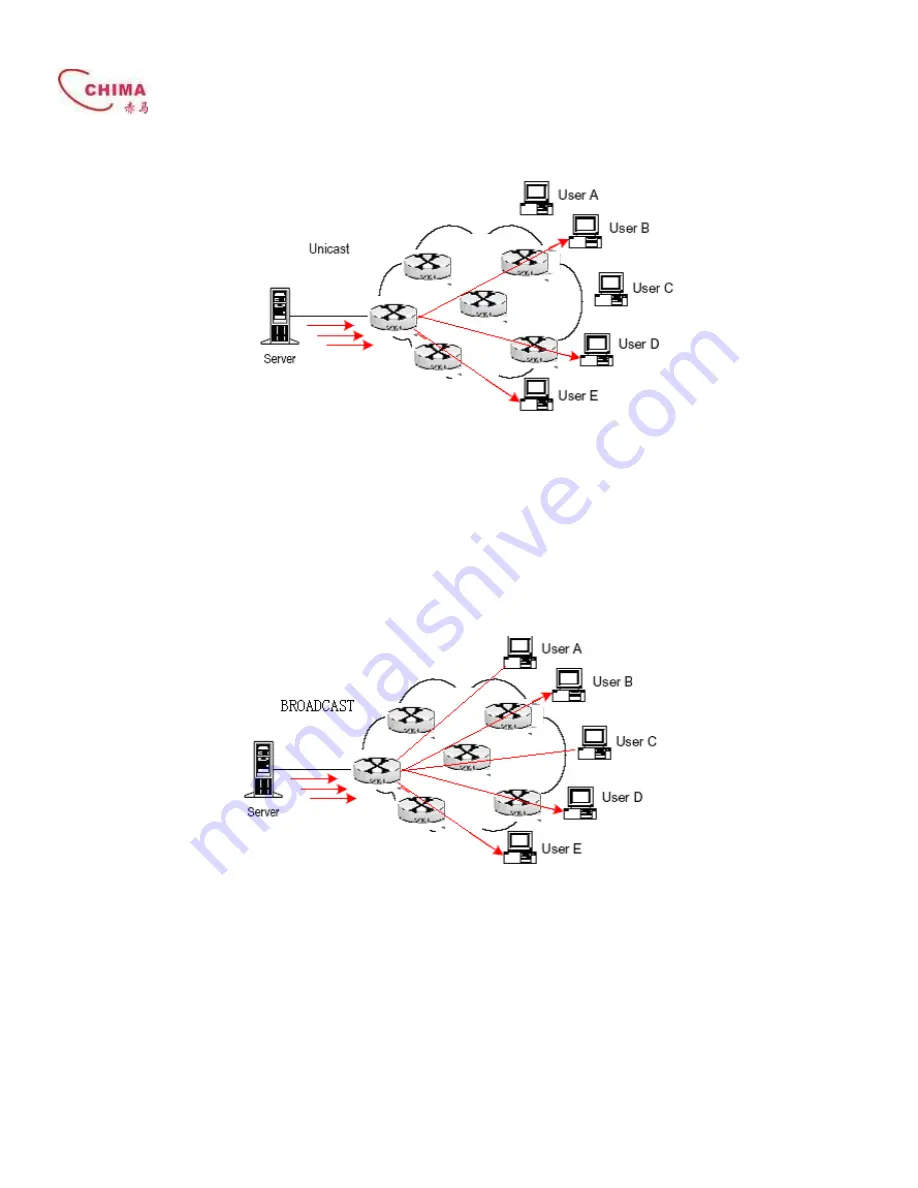
10G Core Routing Switch User Manual
陈泽科技有限公司
- - 55 - -
www.stephen-tele.com
In unicast mode, every user that needs the inforamtion receives a copy through the channels the system separately
establishes for them. See Figure 13-1.
Figure
Data transmission in unicast mode
Suppose that Users B, D, and E need the information, the information source Server establishes transmision channels
with every of them. Since the traffic in transmission increases with the number of users, excessive copies of the
information would spread over the network if the there is a large number of users in need of this infomration. As the
bandwidth would turn short, the unicast mode is incapable of massive transmission.
II. Broadcast
In broadcast mode, every user on the network receives the information regardless of their needs. See Figure 13-2 Data
transmission in broadcast mode.
Figure
Data transmission in broadcast mode
Suppose the Users B, D, and E need the information, the information source Server broadcasts the information
through the router; User A and User C can also receive the information. In that case, information security and rewards
to services are not guaranteed. Moreover, bandwidth is terribly wasted when only a few part of users are in need of
the information.
In short, the unicast mode is useful in networks with scattered users, and the multicast mode is suitable for networks
with dense users. When the number of users is uncertain, the adoption of unicast or multicast mode results in low
efficiency.
















































